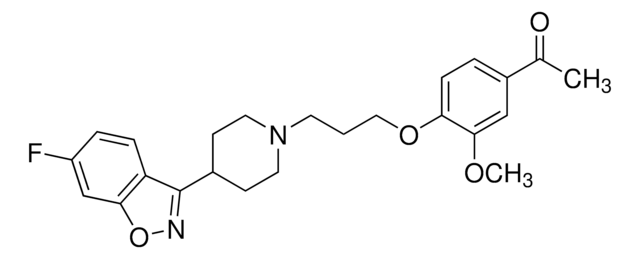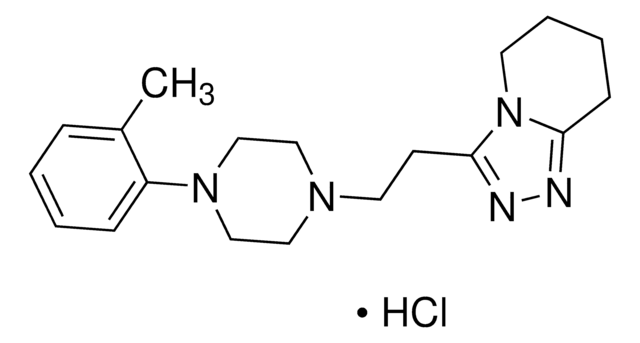SML1923
A-395 hydrochloride
≥98% (HPLC)
Synonym(s):
(3R,4S)-1-(7-Fluoro-2,3-dihydro-1H-inden-1-yl)-4-{4-[4-(methanesulfonyl)piperazin-1-yl]phenyl}-N,N-dimethylpyrrolidin-3-amine hydrochloride
About This Item
Recommended Products
Quality Level
Assay
≥98% (HPLC)
form
powder
storage condition
desiccated
color
white to light brown
solubility
H2O: 10 mg/mL, clear
storage temp.
2-8°C
SMILES string
FC1=CC=CC2=C1C(N3C[C@H](C(C=C4)=CC=C4N5CCN(S(C)(=O)=O)CC5)[C@@H](N(C)C)C3)CC2
Related Categories
Biochem/physiol Actions
A-395N is the negative control for the active enantiomer, A-395. A-395N is available from Sigma. To learn more about and purchase A-395N, click here.
To learn about other SGC chemical probes for epigenetic targets, visit sigma.com/sgc
Features and Benefits
Signal Word
Danger
Hazard Statements
Precautionary Statements
Hazard Classifications
Acute Tox. 3 Oral - Eye Irrit. 2 - Skin Irrit. 2
Storage Class Code
6.1C - Combustible acute toxic Cat.3 / toxic compounds or compounds which causing chronic effects
WGK
WGK 3
Flash Point(F)
Not applicable
Flash Point(C)
Not applicable
Certificates of Analysis (COA)
Search for Certificates of Analysis (COA) by entering the products Lot/Batch Number. Lot and Batch Numbers can be found on a product’s label following the words ‘Lot’ or ‘Batch’.
Already Own This Product?
Find documentation for the products that you have recently purchased in the Document Library.
Our team of scientists has experience in all areas of research including Life Science, Material Science, Chemical Synthesis, Chromatography, Analytical and many others.
Contact Technical Service









